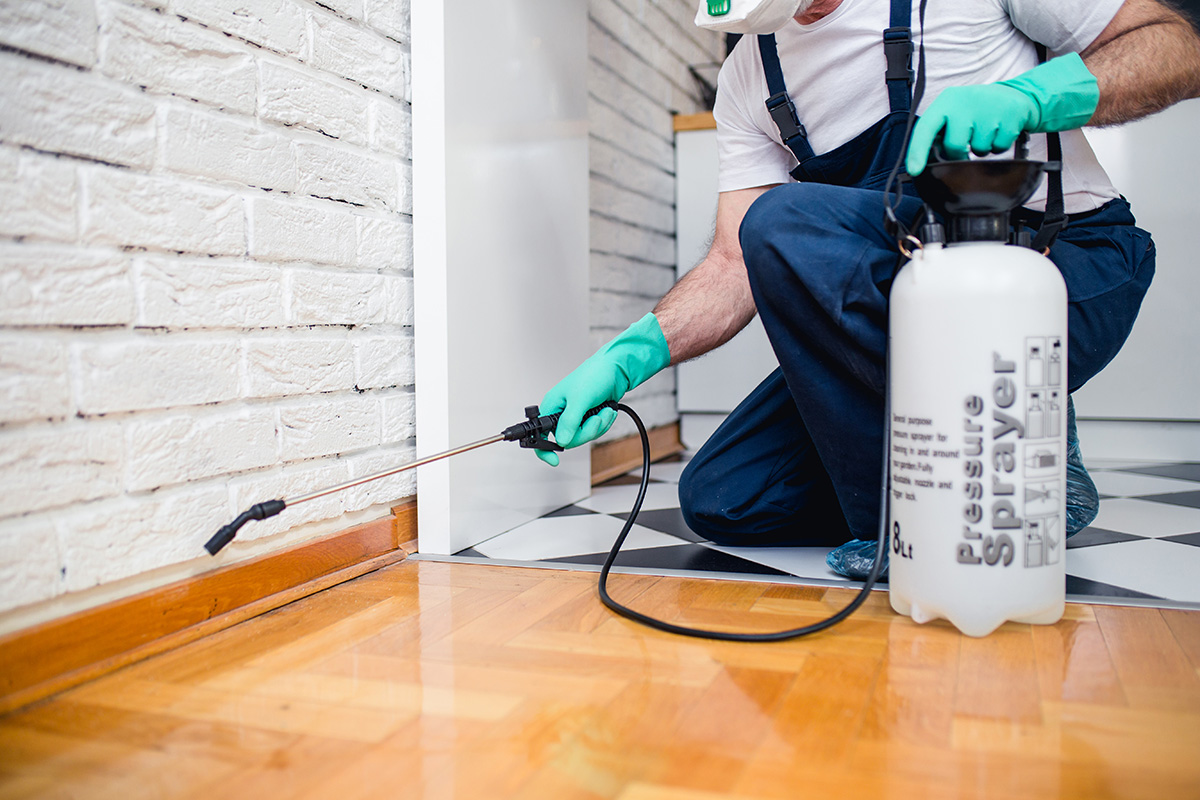A1 Charlotte Pest Control Companies - Your Regional Pest Professionals
Wiki Article
Bed Insect Treatment Break Down: Comparing Chemical Vs. Non-Chemical Solutions
In the realm of parasite control, particularly when dealing with the persistent concern of bed insects, the option in between chemical and non-chemical treatment options can be a critical one. Both approaches use distinctive benefits and disadvantages, affecting aspects such as efficiency, safety and security considerations, and total expense. By examining the nuanced details of each technique, a more clear understanding of which course to pursue in addressing a bed bug invasion can be attained.Efficiency of Chemical Treatments
Chemical treatments for bed insect invasions have been extensively identified for their powerful and quick efficiency in eliminating these bugs. When considering the performance of chemical treatments, it is vital to comprehend that they can offer a fast and comprehensive option to a bed pest trouble.Moreover, chemical treatments have the advantage of providing recurring results, meaning that they can remain to remove bed insects even after the preliminary application. This recurring activity is specifically helpful in combating any prospective re-infestations. In addition, the fast action of chemical therapies can bring relief to individuals encountering severe bed bug problems, enabling them to restore control of their living spaces quickly.
Security Worry About Chemical Solutions
One critical facet that requires cautious consideration when making use of chemical remedies for bed pest therapy is guaranteeing the safety of occupants and the environment. Exposure to particular chemicals utilized in bed bug therapies can lead to respiratory system concerns, skin irritability, or various other damaging responses, particularly in individuals with pre-existing problems or sensitivities.In addition, the environmental effect of chemical options is another significant factor to consider. Some pesticides made use of in bed insect treatments might be hazardous to valuable pests, wildlife, and environments if they seep right into the soil or water supply. It is vital to utilize chemical treatments deliberately, following safety guidelines, and thinking about much less poisonous alternatives to minimize these risks and guarantee the secure and effective administration of bed bug invasions.
Advantages of Non-Chemical Strategies
Thinking about the possible security issues and ecological impact connected with chemical remedies for bed insect treatment, checking out non-chemical strategies presents an appealing alternative with numerous distinct advantages. Non-chemical therapies are eco friendly, as they do not contribute to air or water pollution, making them a lasting option for parasite control.Additionally, non-chemical solutions can be reliable in targeting bed pests, consisting of hard-to-reach areas where chemical therapies may not penetrate. Methods such as heat therapy, vacuuming, steam cleansing, and bed mattress coverings offer complete obliteration without making use of unsafe chemicals. Additionally, non-chemical approaches can be much less turbulent, needing very little prep work and permitting quicker reentry into treated areas. On the whole, deciding for non-chemical bed bug therapy methods not only focuses on safety and security and environmental security yet also makes certain effective and comprehensive insect control.
Limitations of Non-Chemical Treatments

In addition, non-chemical treatments typically require numerous applications to attain successful eradication. This can be taxing and may not always guarantee total removal of all bed insects and their eggs, particularly in concealed or hard-to-reach places.
Moreover, the success of non-chemical treatments heavily relies upon appropriate implementation and thoroughness, which can be testing for individuals without expert experience. Inadequate application of non-chemical approaches may lead to incomplete removal, leading to relentless invasions and the requirement for added treatments.
As a result, while non-chemical therapies have their advantages, it is necessary to acknowledge these limitations and consider them when determining one of the most efficient technique for handling bed check out here insect infestations.
Price Contrast: Chemical Vs. Non-Chemical Options
Offered the limitations connected with non-chemical treatments, a crucial element to evaluate in the context of bed insect administration is the cost contrast between chemical and non-chemical alternatives. In contrast, non-chemical therapies like warm therapy or steam can be extra pricey, with expenses varying from $1,000 to $6,000 for an entire home. While the first cost of chemical therapies may appear reduced, numerous therapies might be called for to fully get rid of the infestation, potentially boosting the general expense.Verdict

Considering the possible safety concerns and ecological impact linked with chemical options for bed pest treatment, exploring non-chemical methods offers an appealing choice with several unique advantages.Offered the constraints associated with non-chemical treatments, an important element to assess in the context of bed insect administration is the price comparison between chemical and non-chemical choices. In comparison, non-chemical treatments like warm treatment or steam can be more expensive, with costs ranging from $1,000 to $6,000 for an entire home. While the preliminary price of chemical treatments official website might appear lower, several therapies may be needed to completely eliminate the infestation, potentially raising the general price.In verdict, when comparing chemical and non-chemical bed insect treatment options, it is important to consider performance, security, benefits, constraints, and cost.
Report this wiki page